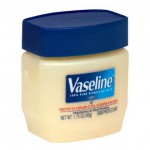The past few years have seen an increase in the number of cosmetic injectable catastrophes. They are easy to find since every one these injection problems appear quickly on the internet. All of these have been done by amateur non-medical people and, in some cases, the patients themselves who have suffered the severe complications including death.
Most commonly these black market cases involve injections to the buttocks of various materials from caulking compounds to silicone oils. But an injection death appeared this month from Argentina that involved breast augmentation. It was not only unusual because it involved the breasts but because of what was injected into them.

But what was it that actually caused her demise? Clearly it was due to the vaseline but why did it takes weeks to exert its lethal effect? Most would think of localized infection and ultimately systemic sepsis as the culprit. While this is a valid risk with any unsterile non-approved implant material, the bigger risk of black market injections is less obvious but even more lethal.
Known as pulmonary emboli or PE, these are fatal clots or obstructions in the lungs. While a well known lung complication from blood clots in the legs (hence the term throwing a clot), a blood clot breaks lose from the bigger veins in the legs and travels to the lung. Once in the lungs, which have smaller sized blood vessels, the relatively large clot gets stuck and wedged into the smaller ‘pipe’. Once stuck it causes that portion of the lung to be unable to exchange air and collapse from which lung failure can occur. In these black market injections, it is a small piece of the injectable material that becomes wedged into a lung artery. In this unfortunate Argentine woman, it was a mobilized piece of vaseline that became the culprit of her lethal PE. Once wedged in place, a severe inflammatory process ensues to the petroleum jelly and the lung eventually collapses.
Between severe infection and pulmonary emboli, one is far more likely to die from a PE from black market injections. Infection can be treated by drainage and IV antibiotics but a PE has little effective treatment, and by the time that it is discovered, the patient is often dead. This risk is never even considered due the complete lack of any medical knowledge of the injector.
Dr. Barry Eppley
Indianapolis, Indiana


